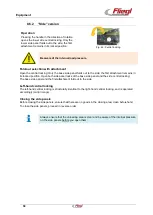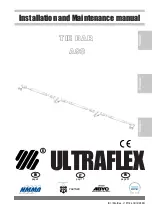
Service and maintenance
73
Typical hazards when working with tyres and wheels:
-
Incorrect tyre filling pressure
-
Road damage
-
Lack of maintenance
-
Excessive load or high speed
The service life of tyres depends on many different factors and therefore
cannot be predicted with sufficient accuracy.
Physical effects:
-
Age
-
Wear
-
Damage
Improper handling
-
Tyres are not routinely examined for signs of wear or damage.
-
Changes to handling characteristics are ignored.
-
Tyre repairs are not performed professionally.
-
The tread depth is not checked regularly and the tyre is not replaced before reaching the
minimum legally permitted tread depth.
-
The correct tyre pressure is not maintained.
-
A tyre that was flat or had an excessively low tyre pressure is refilled.
-
Tyres are not fitted or removed correctly.
-
Tyres are not balanced after being fitted or changed.
-
Different, unapproved tyre dimensions are used.
-
Non-matching wheel and rim sizes are used and deformed or modified wheels are fitted.
-
Tyres are fitted with a speed symbol and load capacity index that does not match the vehicle.
-
Tyres are stored incorrectly.
Environmental influences
-
Temperature extremes
-
Rain, ice, snow
-
Oil and lubricants
Some of the above tasks depend greatly on the type of use and the ambient
conditions. The cycles indicated above (see 10.4.1) are the minimum requirement.
Different maintenance cycles may be needed in individual cases.















































